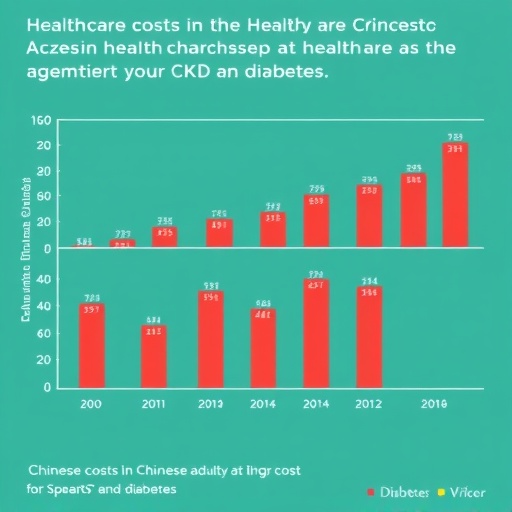The function of a plant's roots go well beyond simply serving as an anchor in the ground. The roots act as the plant's mouth, absorbing, storing and channeling water and nutrients essential for survival.
Researchers have devoted tremendous effort to engineering plants that are more effective at these tasks in order to develop hardier forms that can withstand drought or low-nutrient conditions.
In a new investigation, researchers from the University of Pennsylvania have taken another step toward achieving this goal. They identified two proteins that regulate whether a cell in plant roots forms a hair cell, which increases surface area for absorption, or a non-hair cell. Plants that overexpressed one of these regulators thrived despite being deprived of a key nutrient, phosphorous.
"Normally plants respond to phosphous deprivation by becoming smaller, which means less biomass, less food production and less seed production," said Brian Gregory, an associate professor in the Department of Biology in Penn's School of Arts & Sciences and senior author on the paper. "The intriguing thing is, by overexpressing one of these proteins we identify, GRP8, we were able to produce plants that don't show this kind of dwarfing nearly as significantly as normal plants under phosphorous starvation. That's the exact phenotype we want."
Such plants, which produce more hair cells and thus can more readily absorb water from the soil, could also do well under conditions predicted to be more prevalent under climate change, notably in widespread droughts.
The lead author of the work, published in Developmental Cell, is Shawn W. Foley, a recent Ph.D. recipient in the Cell and Molecular Biology Graduate Program of Penn's Perelman School of Medicine. Additional contributors from Penn were Sager J. Gosai, Nur Selamoglu, Amelia C. Solitti and Fevzi Daldal of the Department of Biology, as well as Benjamin A. Garcia of Perelman. They teamed with Dongxue Wang and Roger B. Deal of Emory University; Tino Köster, Alexander Steffen and Dorothee Staiger of Germany's Bielefeld University; and Eric Lyons of the University of Arizona. Deal and Gregory are co-corresponding authors on the paper.
The researchers initially pursued the study with the aim of determining the difference in RNA between two very similar populations of hair and non-hair cells in the roots of the plant species Arabidopsis thaliana. Using pure populations of nuclei from each of the two cell types, they employed an approach developed earlier by the lab called PIP-seq, which obtains a complete catalog of the interactions between RNA and RNA-binding proteins, interactions that can influence gene expression. This methodology also allowed the team to examine the secondary structure, or folding, of all of the cells' RNA transcripts.
"We were able to see that there were distinct differnces in RNA secondary structure as well as differences in protein binding between root hair and non-hair cells," said Foley.
As a next step, they identified some of the RNA binding proteins that displayed distinct binding profiles between the cell populations and found two that seemed significant. One, called SERRATE, "is known to play a role," Foley said, "in alternative splicing and microRNA biogenesis," processes that can alter gene expression in different ways.
When they interrogated mutant plant lines with reduced SERRATE levels, they found that plants had more, longer hair cells.
A second RNA binding protein they identified was GRP8, also a protein known to affect plants' response to stress through regulating processes that affect gene expression. Plants that the researchers engineered to overexpress GRP8 had an increased number of root-hair cells.
To test whether this trait affected the plant's ability to grow, they cultivated the GRP8-overexpressing plants in phosphorous-depleted soil. They found these plants were able to turn on genes that increase the ability to take up and transport phosphate compared to normal plants. The result was larger plants.
"We actually do see increased phosphate uptake as well as increased biomass of these plants," Foley said. "We got larger, hardier plants under phosphate starvation. We believe it's due to GRP8 functioning in the phosphate response pathway leading to increased root hair formation."
In research now underway, the authors are testing to see whether these findings extend to other plant species, specifically in crop plants. Phosphate is a necessary resource for plants, and thus a component of most fertilizers, but excess phosphate often ends up in waterways, where it can harm aquatic ecosystems. Growing crop plants that require less phosphate could lessen these issues.
In addition to the applications of the findings to improving the efficiency of food production, the researchers note that their technique of identifying the differences in RNA between two closely related cell types can extend to systems beyond plants as well.
"This study is a demonstration of our ability," Gregory said, "to use a genome-wide approach to studying two very similar cell types, and then drill down and find biologically meaningful proteins to study. It provides a model for us and others to move forward in finding post-transcriptional regulators in different developmental stages and stress responses and all kinds of scenarios.
Added Foley, "Something like this really begs the questions of, If we can have different secondary stuructre between these cells types, what other processes can RNA be refolded during and what other processes can this help to regulate. That's a direction the lab is going."
###
The research was supported by the National Science Foundation, German Research Foundation and National Institute for General Medical Sciences.
Media Contact
Katherine Unger Baillie
[email protected]
215-898-9194
@Penn
http://www.upenn.edu/pennnews
############
Story Source: Materials provided by Scienmag




